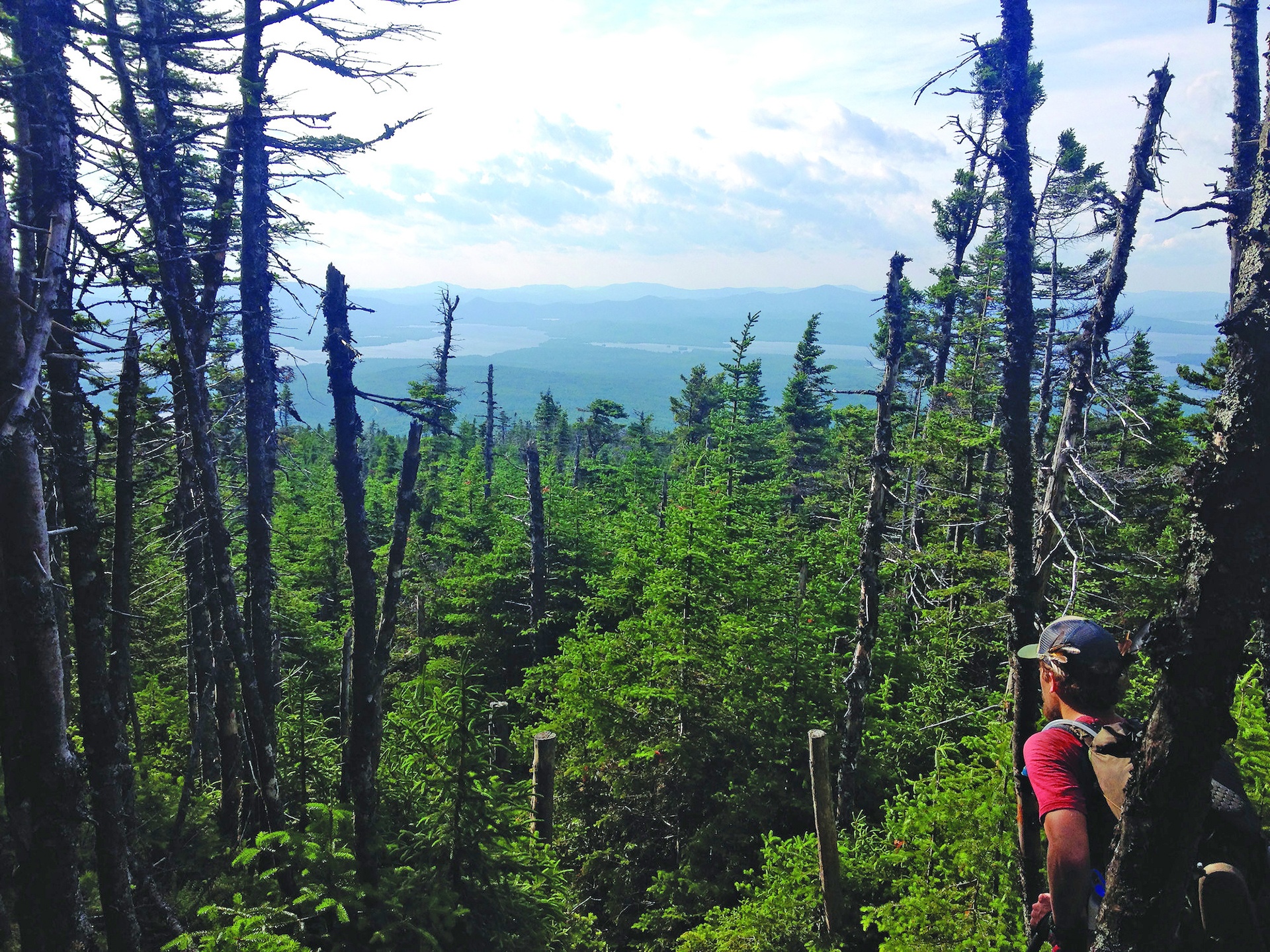For the View: Assessing the Trail’s Scenic Value
Jun 25, 2021

Jun 25, 2021

What elements from your last hike stood out to you? The range of responses is likely near infinite but one thing most would agree on: the experience itself was memorable. The Appalachian Trail (A.T.) provides experiences that create lasting memories for visitors — from the wildlife and flora we see to the people we meet along our journeys, and, of course, the Trail’s iconic and breathtaking views.
“Most visitors to the Trail come for the views and gain a connection to nature,” said Pamela Roy, Visual Resource Inventory Manager at the ATC. “There’s nothing better after a hard hike uphill to then be rewarded by a sweeping panorama or spectacular rock formation. Because these views are so cherished, we consider them an integral part of the A.T. experience, one of the essential values of the Trail.”
The history of the Trail is steeped in themes of connection. When Benton MacKaye first envisioned the A.T. in 1921, he wrote that it would serve, “as the backbone of a super reservation and primeval recreation ground covering the length (and width) of the Appalachian Range itself, its ultimate purpose being to extend acquaintance with the scenery and serve as a guide to the understanding of nature.”
But how does connecting with nature extend to understanding its value as a resource?
For Trail maintainer Bill Saunders, his first A.T. experience was joining his son’s Boy Scout troop for weekend backpacking trips several times a year. As the years went by and Saunders prepared for retirement, he began looking for an activity he could enjoy in his newfound free time. He returned to some of the same A.T. sections he had traveled to with the Scout troop, marveling at how much stronger he’d become by hiking.
“Hiking is a wonderful exercise,” he said. “It’s mentally relaxing and physically beneficial.”
Saunders looked for a deeper connection to the A.T. beyond just being on the footpath. He joined the Mountain Club of Maryland (MCM), holding various roles, including club president, hike leader, and, currently, the supervisor of shelters.
“To make the A.T. happen, volunteers do a valuable and important function that is of great public benefit,” he said.

View from Beamis Mountain in Maine.
Volunteers and Trail maintainers, often described as the “heart and soul of the A.T.,” go above and beyond to assist with large-scale A.T. projects, like the National Park Service (NPS) Visual Resource Inventory (VRI).
Previously called “Enjoy the View,” the VRI is the process of evaluating scenic and visual resources both within and outside the boundaries of a park unit. VRI looks at visual resources both manmade and natural, moving and stationary, such as a landform or body of water. It features everything visible on the landscape, which is referred to interchangeably as a view, viewscape, viewshed, or scenic resource.
“With the Visual Resource Inventory, we are creating a baseline dataset, both capturing photograph documentation of the views in this moment of time and assigning a value tied to the elements of that view,” said Roy.
The VRI assessment process started with a 2019 pilot program undertaken by the Appalachian Trail Conservancy (ATC) and partners, which resulted in 70 field assessments. The ultimate goal of the VRI is embedded in long-term A.T. landscape protection: by evaluating the Trail’s visual resources and understanding what qualities contribute to A.T. views, we are better positioned to protect views from external threats like urban and suburban growth, and climate change, and internally through strong management practices and intensive planning.
“This dataset helps us be better prepared to protect these views,” said Roy. “We will know where to prioritize our efforts because we will have already assessed these areas and understand which views are our highest priority for preservation.”
The massive lift of completing a baseline assessment of the nearly 1,400 known views along the 2,193.1 mile footpath creates an opportunity for partnership between the ATC, agency partners, Trail maintaining clubs, and volunteers.
After attending a Mid-Atlantic Partnership Committee meeting, Saunders learned about the VRI assessment of roughly 150 views taking place in Pennsylvania and New Jersey. For him, it was too good of an opportunity to pass up.
“It’s fun to go out with the team, hiking Trail sections I hadn’t been on in a few years,” he said. “It was refreshing to go back and get a fresh look at them, gain awareness of where those viewpoints are and when you see a viewpoint you weren’t aware of, it can give you a sense of relaxation and joy.”
A view assessment team has four to eight people who hike roughly twelve miles a day. The team takes photos along the way, describing the views in detailed notes, and also evaluates the visual quality of the view using strict guidelines established through the VRI program. As a team starts their day, they have a list of known views along a section of the A.T. and record any additional views they come across. This evaluation makes it easier to see how the Trail has changed between assessments.
“In the two days I have participated so far, we’ve hiked 24 miles and completed two view assessments,” said Saunders. “We thought we’d find more along the way. I spoke with the team leader about places they had already done, and in some cases, viewpoints are gone. The trees have grown up.”
Saunders looks forward to joining the view assessment team on the 2.5-mile Trail section he maintains as well as the 29-mile section maintained by the Mountain Club of Maryland.

Rhododendron Bloom photo by Brent McGuirt Photography
Not all views assessed are looking out at the landscape beyond the A.T. There are also views internal to the Trail, such as a spectacular rhododendron archway, a cascading waterfall at a stream crossing, or a complex rock scramble.
“Part of the work is to define or to better understand what a view is and what makes up our viewing experience while on the Trail,” said Marian Orlousky, Director of Science and Stewardship at the ATC. “While most of us may immediately think of those classic mountain-top panoramas when defining a view, in reality, we are enjoying a visual experience the entire time we are on the A.T.”
During an assessment, a view is evaluated based on its overall composition, such as a strong focal point, bold colors, or harmonious landscape views. It also comes down to a view type as described in the carousel below.View Gallery
While view types are just one of the many data points collected by a view assessment team, they help evaluate the significance of various views along the A.T. corridor. There are an extensive amount of pictures taken as part of the assessments as well, which provide an in-depth look at what needs to be protected, now and in the future.
So as you head out for a hike on the A.T., consider what view has created the biggest impact on your experience. How does it strengthen your connection to the Trail?
While accounting for and assessing the A.T. views will take time to complete, ultimately what inspires us about the A.T. today is worth protecting for the millions of visitors that have yet to experience the beauty of the Trail and its surrounding corridor.


All gifts matched by a group of generous Trail Crew Alumni. Make your DOUBLED gift now!
Donate TodayGet the latest A.T. news, events, merchandise, and sneak peeks delivered directly to your inbox.